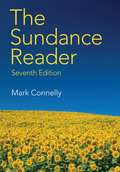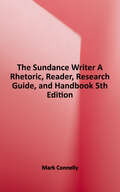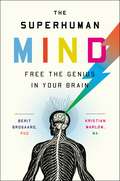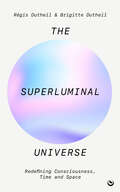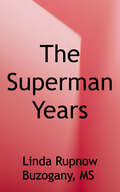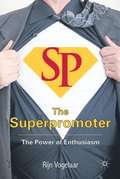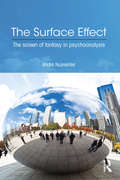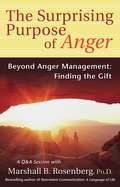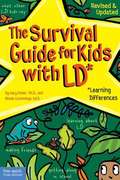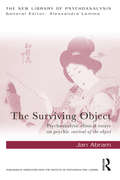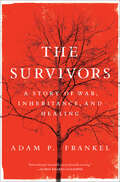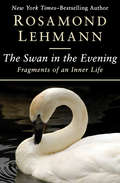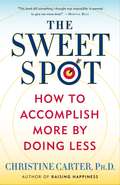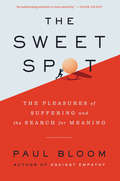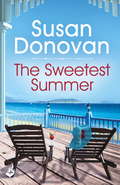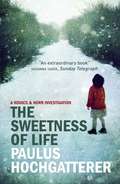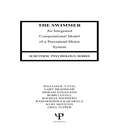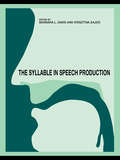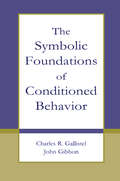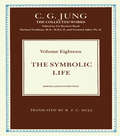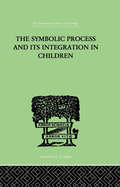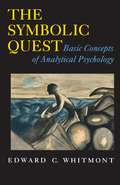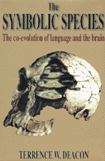- Table View
- List View
The Sundance Reader, 7th edition
by Mark ConnellyTHE SUNDANCE READER, Seventh Edition, features more than 70 concise yet distinct essays drawn from a range of academic disciplines and professions to appeal to a variety backgrounds and interests. Combining classic and contemporary, traditional and provocative, this rich collection of engaging essays and articles emphasizes critical thinking, careful analysis, and effective writing and composition skills. Topics are as varied as the environment, culture, social issues, the media, and business. Selections include works by William Safire, Jessica Valenti, Robert Reich and Al Gore.
The Sundance Writer: A Rhetoric, Reader, Research Guide, and Handbook
by Mark ConnellyPraised for its practical strategies, real-world emphasis, and focus on critical thinking, this successful 4-in-1 text (rhetoric, reading, research guide, and handbook) prepares students for writing in college and the workplace. This edition has been revised so that students move more quickly from the writing process to writing in the modes and incorporating research into their writing projects.
The Superhuman Mind: Free the Genius in Your Brain
by Ma Kristian Marlow Berit BrogaardDid you know your brain has superpowers? Berit Brogaard, PhD, and Kristian Marlow, MA, study people with astonishing talents--memory champions, human echolocators, musical virtuosos, math geniuses, and synesthetes who taste colors and hear faces. But as amazing as these abilities are, they are not mysterious. Our brains constantly process a huge amount of information below our awareness, and what these gifted individuals have in common is that through practice, injury, an innate brain disorder, or even more unusual circumstances, they have managed to gain a degree of conscious access to this potent processing power. The Superhuman Mind takes us inside the lives and brains of geniuses, savants, virtuosos, and a wide variety of ordinary people who have acquired truly extraordinary talents, one way or another. Delving into the neurological underpinnings of these abilities, the authors even reveal how we can acquire some of them ourselves--from perfect pitch and lightning fast math skills to supercharged creativity. The Superhuman Mind is a book full of the fascinating science readers look for from the likes of Oliver Sacks, combined with the exhilarating promise of Moonwalking with Einstein.
The Superluminal Universe: Redefining Consciousness, Time and Space
by Régis Dutheil Brigitte DutheilFirst English translation of the French cult classic L'Homme Superlumineux which offers a mind-blowing account of human consciousness and the nature of reality that will change the way readers see the world.The Superluminal Universe reveals, for the first time in English, the incredible insights of French quantum physicist Professor Régis Dutheil. Thanks to the development of particle accelerators, physicists are now able to propel particles (tachyons) at a speed close to that of light (300,000 km per second). At these extreme speeds, the laws that govern our universe no longer apply. Professor Dutheil's work has shown that the theory of relativity is not incompatible with that of tachyons, provided that we allow for the possibility of a double reality: that alongside our sub-luminous universe, which follows the law of time, is a superluminal universe. This second reality is another universe, complementary to and symmetrical with ours, governed by superluminal space-time in which light moves 300,000 km/s to infinity.In the superluminal universe, everything is instantaneous. It is possible to conceive of a superluminal being capable of moving from one end of space to the other. This parallel universe consists only of information and consciousness: all information (past, present, future) and the consciousness of all humanity. Professor Dutheil's thesis joins the intuitions of ancient philosophers with current quantum physics to blow our current notions of time, of past and present, of the nature of consciousness, of birth and death right out of the water.
The Superman Years: The Emotional Life of a Parent Caring for a Child with Type 1 Diabetes
by Linda Rupnow BuzoganyA mother and psychology professor recounts her family's early experiences with this life threatening, daunting disease, and offers ways to cope with the long term emotional and physical burdens.
The Superpromoter
by Rijn VogelaarWith their word-of mouth advocacy of products or brands, superpromoters influence us and how we buy with the power of enthusiasm. Business managers should not just focus on complaining customers but they should value their enthusiastic friends: the superpromoters. By cultivating the superpromter they can more effectiviely promote their brand.
The Surface Effect: The Screen of Fantasy in Psychoanalysis
by André NusselderEven before we think, we use fantasy. Is fantasy the ‘mother of all media’? Does fantasy save me from myself? Are there fictions that are real? In The Surface Effect André Nusselder examines the space of fantasy between individual ‘inner life’ and social ‘outer life’. Where we assume that fantasy only operates where we float off in imaginary realms, this book shows that we are in it from the beginning. Based on the work of Jacques Lacan, Nusselder elaborates Lacan’s theory, showing how the effects of unconscious processes converge in fantasy as our principal medium for self-identity, perception, remembering and intersubjectivity. The human mind is seen as a composite function of language, body and social world, and fantasy is the fundamental process to study this effect. The book is divided into three sections: - The Philosophical Context- Lacan’s Theory of Fantasy- Lacan and Philosophy The Surface Effect analyses fantasy as a medium, both creative and protective operating between anxiety and excess. It focuses on the role of fantasy in psychoanalysis, and follows its path towards reflections on mediation and new media. This book will appeal to psychoanalysts, philosophers, cognitive scientists and those studying new media, film, culture and literature. André Nusselder is a Dutch philosopher, writer and computer programmer.
The Surprising Purpose of Anger: Finding the Gift
by Marshall B. RosenbergYou can feel it when it hits you. Your face flushes and your vision narrows. Your heartbeat increases as judgmental thoughts flood your mind. Your anger has been triggered, and you are about to say or do something that will likely make it worse. You have an alternative. By practising the Non-violent Communication (NVC) process you can use that anger to serve a specific, life-enriching purpose. It tells you that you're disconnected from what you value and that your needs are not being met. Rather than managing your anger by suppressing your feelings or blasting someone with your judgements, Marshall Rosenberg shows you how to use anger to discover what you need, and then how to meet your needs in constructive ways. This book will help you apply these four key truths: People or events may spark your anger but your own judgements are its cause; Judging others as 'wrong' prevents you from connecting with your unmet needs; Getting clear about your needs helps you identify solutions satisfying to everyone; Creating strategies focused on meeting your needs transforms anger into positive actions.
The Survival Guide for Kids with LD*: *Learning Differences
by Gary L. Fisher Rhoda CummingsThis book discusses how children with learning differences can get along better in school, set goals, and plan for the future. With references and index.
The Surviving Object: Psychoanalytic clinical essays on psychic survival-of-the-object (New Library of Psychoanalysis)
by Jan AbramIn this book, Abram proposes and elaborates the dual concept of an intrapsychic surviving and non surviving object and examines how psychic survival-of-the-object places the early m/Other at the centre of the nascent psyche before innate factors are relevant. Abram’s clinical-theoretical elaborations advance several of Winnicott’s key concepts. Moreover, the clinical illustrations show how her advances arise out of the transference-countertransference matrix of the analyzing situation. Chapter by chapter the reader witnesses the evolution of her proposals that not only enhance an appreciation of Winnicott’s original clinical paradigm but also demonstrate how much more there is to glean from his texts especially in the contemporary consulting room. The Surviving Object comprises 8 chapters covering themes such as: the incommunicado self; violation of the self; the paradox of communication; terror at the roots of non survival; an implicit theory of desire; the fear of WOMAN underlying misogyny; the meaning of infantile sexuality; the ‘father in the nursing mother’s mind’ as an ‘integrate’ in the nascent psyche; formlessness preceding integration; a theory of madness. The volume will appeal to psychoanalysts and psychoanalytically-informed psychotherapists of all levels who are inspired by clinical psychoanalysis and the study of human nature.
The Survivors: A Story of War, Inheritance, and Healing
by Adam P. FrankelThe grandson of Holocaust survivors comes to terms with his family’s painful past and a shocking revelation of his own origins in this moving memoir.Adam Frankel’s maternal grandparents survived the Holocaust and built new lives, with new names, in New Haven, Connecticut. Though they tried to leave the horrors of their past behind, the pain they suffered crossed generational lines—a fact most apparent in the mental health of Adam’s mother. When Adam set out to examine his family history, he learned a shocking secret that unraveled Adam’s entire understanding of who he is and where he came from.Through this journey into the past—from the horrors of Dachau to an identity crisis as a speechwriter in the Obama White House to the long road toward healing—Adam is forced to reckon with his family’s psyche and secrets, the science of trauma, the cruelty of mental illness, and the ugly truth of his own origins.Through the process, he comes to realize that while the nature of our families’ traumas may vary, each of us is faced with the same choice: we can turn away from what we’ve inherited or we can confront it in the hopes of moving on and stopping that trauma from inflicting pain on future generations.Chicago Tribune Notable Book of 2019
The Sustained Shared Thinking and Emotional Well-being (SSTEW) Scale: Supporting Process Quality in Early Childhood
by Iram Siraj Denise Kingston Edward MelhuishFirst published in 2015, The SSTEW Scale has been widely used in early childhood education and care, in all sectors across the world, to enhance the quality of education, and monitor and assess practice. It explores pedagogy and practice that improve children’s social-emotional development, self-regulation, language, and critical thinking. The SSTEW Scale is an innovative method of assessing the process quality of an early years education environment and pedagogy. It promotes practice where staff provide sensitive, responsive relationships and high-quality interactions, which includes supporting children’s social, emotional and communication skills. This scale also helps educators to engage children in thinking deeply, problem solving and reasoning, including items which support the four competencies: critical thinking, creativity, communication and collaboration, all identified as life-long skills needed for all children in the 21st century by the World Economic Forum in 2016. This new edition includes updated information about the evidence-base for SSTEW and children’s development and learning as well as the expansion of examples and supplementary information accompanying the indicators. In addition, there is a stronger focus on formative assessment and new additions to the assessment section. The SSTEW Scale can be used to support research, auditing and practice uplift. It is a key text for the sector to assess and improve the quality of provision during audits, and for educators seeking professional development by improving their knowledge of excellent practice.
The Swan in the Evening: Fragments of an Inner Life (Vmc Ser. #59)
by Rosamond LehmannRosamond Lehmann's only autobiographical work recreates the events that shaped her life--from childhood to motherhood to the death of her daughter Rosamond Lehmann was born during a violent February thunderstorm and lived a sheltered, privileged life with her parents, brother, and sisters. Writing from the distance of decades, she reveals why no adult would ever apologize to a child, shares thoughts on her "first conscious memory," and discusses the taboo subjects of "birth, death, physical and sexual functions." Later, she recounts the tragedy that rocked her world as a mother. A blackbird with a broken neck appears as a harbinger of doom: A few hours after finding the bird, Lehmann receives a phone call from her son telling her that her twenty-four-year-old daughter, Sally, is dead. Wracked with grief and desperate for answers, Lehmann, a non-believer, finds solace in spiritualism. Beginning with an examination of Lehmann's singular childhood featuring cherished friends and pets, and concluding with an extraordinary letter to her granddaughter Anna, TheSwan in the Evening is about the search for peace and acceptance--and finding hope in the face of unbearable loss.
The Sweet Spot
by Christine CarterLearn how to achieve more by doing less! Live in that zone you've glimpsed but can't seem to hold on to--the sweet spot where you have the greatest strength, but also the greatest ease. Not long ago, Christine Carter, a happiness expert at UC Berkeley's Greater Good Science Center and a speaker, writer, and mother, found herself exasperated by the busyness of modern life: too many conflicting obligations and not enough time, energy, or patience to get everything done. She tried all the standard techniques--prioritizing, multitasking, delegating, even napping--but none really worked. Determined to create a less stressful life for herself--without giving up her hard-won career success or happiness at home--she road-tested every research-based tactic that promised to bring more ease into her life. Drawing on her vast knowledge of the latest research related to happiness, productivity, and elite performance, she followed every strategy that promised to give her more energy--or that could make her more efficient, creative, or intelligent. Her trials and errors are our reward. In The Sweet Spot, Carter shares the combination of practices that transformed her life from overwhelmed and exhausting to joyful, relaxed, and productive. From instituting daily micro-habits that save time to bigger picture shifts that convert stress into productive and creative energy, The Sweet Spot shows us how to * say "no" strategically and when to say "yes" with abandon * make decisions about routine things once to free our minds to focus on higher priorities * stop multitasking and gain efficiency * "take recess" in sync with the brain's need for rest * use technology in ways that bolster, instead of sap, energy * increase your ratio of positive to negative emotions Complete with practical "easiest thing" tips for instant relief as well as stories from Carter's own experience of putting The Sweet Spot into action, this timely and inspiring book will inoculate you against "The Overwhelm," letting you in on the possibilities for joy and freedom that come when you stop trying to do everything right--and start doing the right things. Advance praise for The Sweet Spot "Illuminates the simple and sustainable path toward a precious and happy balance."--Deepak Chopra "A gift, like a good friend drawing a personal road map out of the crazy busy swirl of our overloaded lives."--Brigid Schulte, author of Overwhelmed "This book did something I thought was impossible: It seemed to give me more time."--Martha Beck, author of Finding Your Way in a Wild New World "A page-turning thriller full of proven ways to have the life you want."--Rick Hanson, Ph.D., author of Hardwiring Happiness "Timely, lively, and vital, The Sweet Spot is an immediately useful must-read."--Shawn Achor, author of The Happiness Advantage"The Sweet Spot inspired me to make immediate changes that have increased my productivity and lowered my stress."--Dan Mulhern, president, Granholm Mulhern Associates "A must-read for every overworked executive, overwrought parent, or overscheduled human being."--Jennifer Granholm, governor of Michigan, 2003-11From the Hardcover edition.
The Sweet Spot: The Pleasures of Suffering and the Search for Meaning
by Paul Bloom“This book will challenge you to rethink your vision of a good life. With sharp insights and lucid prose, Paul Bloom makes a captivating case that pain and suffering are essential to happiness. It’s an exhilarating antidote to toxic positivity.” —Adam Grant, #1 New York Times bestselling author of Think Again and host of the TED podcast WorkLifeFrom the author of Against Empathy comes a different kind of happiness book, one that shows us how suffering is an essential source of both pleasure and meaning in our livesWhy do we so often seek out physical pain and emotional turmoil? We go to movies that make us cry, or scream, or gag. We poke at sores, eat spicy foods, immerse ourselves in hot baths, run marathons. Some of us even seek out pain and humiliation in sexual role-play. Where do these seemingly perverse appetites come from?Drawing on groundbreaking findings from psychology and brain science, The Sweet Spot shows how the right kind of suffering sets the stage for enhanced pleasure. Pain can distract us from our anxieties and help us transcend the self. Choosing to suffer can serve social goals; it can display how tough we are or, conversely, can function as a cry for help. Feelings of fear and sadness are part of the pleasure of immersing ourselves in play and fantasy and can provide certain moral satisfactions. And effort, struggle, and difficulty can, in the right contexts, lead to the joys of mastery and flow.But suffering plays a deeper role as well. We are not natural hedonists—a good life involves more than pleasure. People seek lives of meaning and significance; we aspire to rich relationships and satisfying pursuits, and this requires some amount of struggle, anxiety, and loss. Brilliantly argued, witty, and humane, Paul Bloom shows how a life without chosen suffering would be empty—and worse than that, boring.
The Sweetest Summer: Bayberry Island Book 2 (Bayberry Island)
by Susan DonovanNew York Times bestselling author Susan Donovan returns to Bayberry Island, where a bronze mermaid statue could be the cause of heartbreak or everlasting romance for a practical-minded police chief and his first love. Perfect for fans of Susan Elizabeth Phillips, JoAnn Ross and Jill Shalvis.Every instinct tells Police Chief Clancy Flynn that his island's claim to fame is nothing but a silly tourist attraction. Still, he can't help but wonder if his lifetime of bad romances - starting with the pretty tourist who broke his twelve-year-old heart - could be traced back to a childhood prank involving that very statue...Then one day the pretty tourist comes barrelling back into Bayberry - all grown-up and on the run with her niece. Though Evelyn McGuinness is wanted for kidnapping, she tries to persuade Clancy that there's more to the story. Now the by-the-book police chief must make the toughest decision of his life: to take Evelyn into custody - or into his arms...Don't miss more irresistible Bayberry Island romance with Rowan's story in Sea of Love and Duncan's story in Moondance Beach.
The Sweetness of Life
by Paulus HochgattererIt is Christmas in the alpine town of Furth am See and a six-year-old girl is playing ludo with her grandfather. The doorbell rings, and the old man goes to answer. The next time the girl sees him, he is lying with his skull broken, his face a red pulp against the white snow. From that time on, she does not speak a single word. Raffael Horn, the psychiatrist engaged to treat the silent child, reluctantly becomes involved in solving the murder along with Detective Superintendent Ludwig Kovacs. Their parallel researches sweep through the town: a young mother who believes her new-born child is the devil; a Benedictine monk who uses his iPod to drown the voices in his head; a high-spending teenager who tortures cats. The psychological profile of this claustrophobic, winter-held town is not reassuring - which, if any, of its inhabitants was the brutal night-time slayer of the suffering girl's grandfather?
The Sweetness of Life
by Paulus HochgattererIt is Christmas in the alpine town of Furth am See and a six-year-old girl is playing ludo with her grandfather. The doorbell rings, and the old man goes to answer. The next time the girl sees him, he is lying with his skull broken, his face a red pulp against the white snow. From that time on, she does not speak a single word. Raffael Horn, the psychiatrist engaged to treat the silent child, reluctantly becomes involved in solving the murder along with Detective Superintendent Ludwig Kovacs. Their parallel researches sweep through the town: a young mother who believes her new-born child is the devil; a Benedictine monk who uses his iPod to drown the voices in his head; a high-spending teenager who tortures cats. The psychological profile of this claustrophobic, winter-held town is not reassuring - which, if any, of its inhabitants was the brutal night-time slayer of the suffering girl's grandfather?
The Swimmer: An Integrated Computational Model of A Perceptual-motor System (Scientific Psychology Series)
by William R. Uttal Gary Bradshaw Sriram Dayanand Robb Lovell Thomas ShepherdThis research monograph describes a large programming project in which an underwater organism, capable of perceiving, learning, deciding, and navigating, is computationally simulated. The developed computational model serves as a contemporary theory of perceptual-motor performance, embodying much of what is known about human vision and some of what is known about other cognitive processes. This artificial intelligence project has substantial contributions to make to the development of autonomous underwater vehicles. It also makes a specific theoretical statement about the organization and nature of organic perceptual motor systems that may be useful to psychologists, neuroscientists, and theoreticians in a number of other fields.
The Syllable in Speech Production: Perspectives on the Frame Content Theory
by Barbara L. Davis Krisztina ZajdoAs a testament to the scope of Peter MacNeilage’s scholarly work across his 40 year career, contributions to this tribute volume represent a broad spectrum of the seminal issues addressed by phonetic and evolutionary science over a number of years. Approaches to the problems raised by attempting to understand these fundamental topics are illustrated in the broad diversity of paradigms represented in the volume. This diversity in itself is a tribute to the breadth of scholarly questions pursued by MacNeilage across his career. Chapters are arranged around five thematic areas. Two themes, Evolutionary Perspectives on Speech Production and Acquisition of Speech, reflect the major thrust of Peter’s scholarly career over the past 25 years. The other themes are reflective of the broad implications of MacNeilage’s work for scholars in disparate scientific domains. One of the strengths of this volume is the unitary focus of contributions by scientists from diverse scientific backgrounds in considering the applicability of the Frame Content Theory within their own scholarly perspectives. Thematic strands in the volume include: - Evolutionary Perspectives on Speech Production - Neurobiological Aspects of Speech - Perception / Action Relationships - Acquisition of Speech Production Skill - Modeling and Movement - Alternative Perspectives on the Syllable.
The Symbolic Foundations of Conditioned Behavior (Distinguished Lecture Series #Vol. 1997)
by Charles R. Gallistel John GibbonThe goal of this book is to persuade students of animal learning that cognitive theorizing is essential for an understanding of the phenomena revealed by conditioning experiments. The authors also hope to persuade the cognitive psychology community that conditioning phenomena offer such a strong empirical foundation for a rigorous brand of cognitive psychology that the study of animal learning should reclaim a more central place in the field of psychology.
The Symbolic Life: Miscellaneous Writings (Collected Works of C.G. Jung #53)
by C.G. JungOriginally planned as a brief final volume in the Collected Works, The Symbolic Life has become the most ample volume in the edition, and one of unusual interest. It contains some 160 items spanning sixty years; they include forewords, replies to questionnaires, encyclopedia articles, occasional addresses, and letters on technical subjects.Collection of this material relied on three chief circumstances. After Jung returned from active medical practice, he gave more of his time to writing, and some sixty papers as well as books were written after 1950. Second, recent research has brought to light a number of reviews, reports and articles from the early years of Jung's career. Finally, Jung's files yielded several finished or virtually finished papers that survived in manuscript. Volume 18 includes three longer works: 'The Tavistock Lectures' (1936); 'Symbols and the Interpretation of Dreams' (1961); and 'The Symbolic Life', the transcript of a seminar given in London in 1939.
The Symbolic Process And Its Integration In Children: A STUDY IN SOCIAL PSYCHOLOGY (Midway Reprint Ser.)
by Markey, John FFirst Published in 1999. Routledge is an imprint of Taylor & Francis, an informa company.
The Symbolic Quest: Basic Concepts of Analytical Psychology - Expanded Edition
by Edward C. WhitmontThis book explores the use and development of man's symbolizing capacities-those qualities that make him distinctly human. Dr. Whitmont describes the symbolic approach to a dream, which takes into account a symptom's meaning in reference to an unfolding wholeness of personality. He then presents the view that the instinctual urge for meaning is served by the symbolizing capacities, and that this urge has been repressed in our time. In the field of psychology, this symbolic approach is most fully exemplified by the theories of C. G. Jung. The author's contribution includes many differentiations and speculations, especially concerning the problems of relatedness.
The Symbolic Species: The Co-evolution of Language and the Brain
by Terrence W. DeaconTerrence Deacon departs from the conventional theories which state that language arose, somehow, once the human brain became large and complex enough. He argues that the brain and language developed in concert, explains how the process occurred, and draws out the compelling implications of this new view of human origins.
